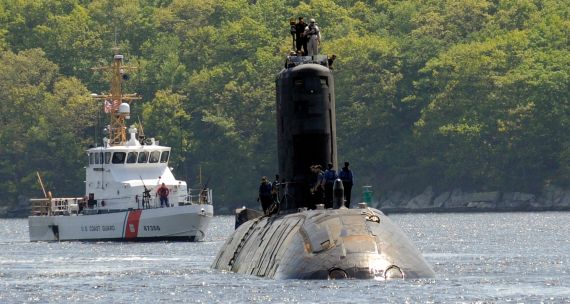I met Peter Vesterbacka at the We+ ‘Coworking Space’ in Helsinki, a place he affectionately dubbed the ‘Heart of Eurasia.’ We+, a Chinese company that operates startup incubators across the Finnish mainland, had recently made Helsinki the home of its first overseas facility. It is here that Vesterbacka lays out his plan to make Finland the fulcrum of China’s pivot to Eurasia – its ‘Belt and Road Initiative.’ For those who don’t know what China’s Belt and Road Initiative (BRI) is . . . join the club.
One of the most commented-upon aspects of the BRI is its lack of a precise definition. Some have argued that it is China’s 21st century grand strategy, others consider it a general term for China-led globalization, still others have suggested it is so ubiquitous as to be meaningless.
Despite this confusion, what we do know is that China’s BRI involves the creation of new infrastructure linking China and Europe to the tune of anywhere between US$1 and US$4 trillion – massive projects in Kazakhstan, Russia, Pakistan, and Sri Lanka are already nearing completion with more in the pipeline. BRI is the signature strategy of the Xi Jinping Era and it will directly lead to a world in which overland and overseas shipping between China and Europe is faster and more efficient than ever.
Enter Peter Vesterbacka. The onetime creator of the massively popular ‘Angry Birds’ gaming app envisions the construction of a railway tunnel between the Finnish capital of Helsinki and the Estonian capital of Tallinn – cutting what is today a two-hour ferry ride across the Baltic Sea down to a 30-minute rail commute. Vesterbacka further envisions a single Helsinki-Tallinn metropolitan area straddling the Baltic Sea.
So how does this tunnel concept relate to China’s Belt and Road Initiative? The connection between a grand project of Eurasian integration and a tunnel between two European capitals may seem obscure at first, but there are two factors at play that inform this nascent relationship. First is Helsinki’s position as an emerging hub for air traffic between China and Europe. Helsinki Vantaa is actually the closest European airport to China and Finnair has already successfully capitalized on this convenience of geography to become a significant player in Eurasian air travel. A tunnel to Tallinn would permit passengers from China to land in Finland and travel from the airport to mainland Europe in under an hour. The same is true for the opposite direction, with passengers from Estonia simply hopping on the train to fly to Asia via Helsinki. The tunnel represents an infrastructural maneuver that could put Finland at the heart of passenger traffic between China and Europe.
And it wouldn’t just be passenger traffic. China is increasingly emphasizing the role of Arctic supply chains in the BRI, as references to the construction of a ‘Polar Silk Road’ in its Arctic Policy whitepaper attests. To date, the ‘Polar Silk Road’ has few concrete manifestations; however, the governments of Finland and Norway are enthusiastically pursuing plans to get in on the ground floor.
The second factor at play is the fact that Norway and Finland are now discussing a plan to link the Finnish Rail network with the Arctic Coast of Norway. The completion of Vesterbacka’s tunnel project combined with an Arctic railway link would create an uninterrupted rail line from the Arctic to the heart of Europe, opening the very real possibility of trade with East Asia via the Arctic Ocean. The emergent supply chains could cut existing shipping routes between Asia and Europe nearly in half with dramatic consequences for industry on both sides.
For his part, Vesterbacka speaks enthusiastically about the tunnel’s potential place in the Belt and Road Initiative, and the prospects of Chinese project financing and construction. He purports to have already secured financial backing from Chinese sources and presents an incredibly ambitious timeline for his project. In conversation with me, Vesterbacka claimed construction could begin as early as this year with the tunnel up and running as early as 2024. The European Union (EU), meanwhile, has taken a much more conservative approach in its studies of the tunnel project, pinning the likely completion date of a public tunnel project somewhere around the mid-21st century.
Regardless what becomes of this project, the public dialogue around it reveals a great deal. Even highly-developed EU member states such as Finland are beginning to package their grand infrastructural ambitions in the language of the Belt and Road Initiative. As this trend continues, the BRI gains significance beyond China, absorbing and incorporating the local priorities of participants around the world and becoming a global system of infrastructure-led development under Chinese leadership.
Also in APF Canada's new ‘China’s Polar Silk Road’ web series:
Scandinavia’s Unlikely Link in the Belt and Road Initiative
An Interview with the President of Finland's Sámi Parliament Tiina Sanila-Aikio
Angry Birds Creator Wants to Connect Finland to Belt and Road with World’s Longest Underwater Tunnel
Finland's Arctic Data Cable Set to Disrupt Global Connectivity




